How PAYS POS Helps QSRs Reduce Overhead Costs and Boost Profit Margins

On Friday at a bustling Benny’s Burgers, a Miami fast-food point. The line’s out the door, the fryers are rocking, and the team’s hustling to keep up!. But when Benny checks his report that evening, the numbers are staggering, thousands of card charges, fees for renting terminals he doesn’t even own, and lengthy processing delays that choke cash flow.
Sound familiar?
If you run a QSR, you’ve probably felt that same frustration: You’re serving great food, but the profits keep slipping away in hidden costs.
That’s exactly where PAYS POS changes the game.
Why Reducing Overhead Costs Matters More Than Ever
Margins in the restaurant world are razor-thin — especially for franchise and multi-location QSRs. Between rising labor costs, inflation, and third-party delivery fees, every penny counts.
A study by the National Restaurant Association shows that average profit margins for QSRs hover around 3–6%. If 3.5% of every transaction goes to processing fees, that’s half your profits gone before you’ve even paid the staff.
So yes, your POS system isn’t “just a tool” — it’s the financial engine of your restaurant.
Also Read: How PAYS POS Cuts Order Errors in Half
The Hidden Costs Most POS Systems Don’t Tell You About
Traditional POS systems like Clover or Toast often bury expenses behind “convenience.”
- Hardware rental traps: You don’t actually own your terminals. You’re leasing them on long-term contracts.
- Processing fees: Between 2.5–4% per transaction, those add up fast.
- Support and upgrade costs: Need a replacement? Pay a “service fee.” Need help on a weekend? Wait till Monday.
This “vendor lock-in” keeps restaurants dependent, not empowered.
How PAYS POS Flips the Model for QSRs
PAYS POS was built specifically for restaurants that are done playing defense with their profits. Here’s how:
- 0% Processing Fee with Dual Pricing
Forget paying card fees altogether. PAYS POS uses a dual pricing model, letting customers choose between a cash or card price — legally and transparently.
You keep 100% of your revenue.
💡 Learn how this works in detail on our Cash Discount Pro page.
- Free Hardware You Actually Own
No leases. No “return on cancellation” fine print. You get free hardware, fully owned from day one.
If a terminal breaks during the lunch rush, you simply plug in a new one — no waiting for “approval.”
- Smart Menu Management & Real-Time Insights
You can’t fix what you can’t measure.
With PAYS POS, QSR owners get live reporting, inventory insights, and staff performance analytics — all from one dashboard.
Imagine knowing your top-performing items by hour, or which shifts drive the most waste. That’s not data — that’s clarity.
📊 Explore the full suite on Marketing & Reporting Tools.
- Franchise-Ready, Multi-Location Control
Whether you’ve got one burger joint or twenty, you can totally handle menus, pricing, and loyalty programs across all your spots.
One login. One source of truth.
Think of it as a franchise POS system built for scalability.
- Customer Loyalty That Actually Pays Off
With POS-integrated loyalty programs, you can automatically reward repeat guests, upsell combos, and run custom promos — without third-party apps.
Why pay extra for engagement tools when your POS already does it smarter?
Mini Case Study: The 3-Month Turnaround
La Fiesta Tacos en Tampa.
They switched to PAYS POS from Toast in early 2024. Within 90 days:
- Processing fee savings: $2,800/month
- Due to loyalty rewards avg. ticket increase: +12%
- Hardware costs saved: $1,200 upfront
The owner nailed it when they said:
“We didn’t just save money — we finally kept what we earned.”
PAYS POS vs. Competitors: The Real Difference
Feature | PAYS POS | Toast | Clover |
Processing Fees | 0% (Dual Pricing) | 2.49–3.5% | 2.6–3.5% |
Hardware Ownership | Free & Owned | Leased | Leased |
Multi-Location Control | ✅ | ✅ | Limited |
Loyalty Program | Built-In | Add-On | Add-On |
24/7 Support | Included | Paid Tier | Paid Tier |
Transparency | Full | Partial | Partial |
PAYS POS vs. Competitors: The Real Difference
- Chasing “cheap” POS systems that hide costs in the fine print.
- Ignoring PCI DSS compliance — leading to security risks.
- Using separate tools for loyalty, delivery, and payroll (and paying multiple subscriptions).
- Failing to track real-time performance metrics.
- Forgetting staff training — resulting in downtime and errors.
PAYS POS eliminates all that friction by keeping everything unified, transparent, and compliant.
How the Future of POS Is Redefining QSR Profitability
AI-driven insights, automated labor management, and predictive analytics are redefining restaurant efficiency. But no matter how advanced tech becomes, one truth remains:
If your POS eats your profit, no upgrade can save you.
That’s why PAYS POS focuses on profit-first innovation. As trends evolve, features like self-order kiosks, contactless loyalty redemption, and delivery integration are becoming must-haves — and PAYS POS is already leading that curve.
Final Overview
Running a QSR is hard enough — your POS shouldn’t make it harder.
PAYS POS gives you back control, cash flow, and confidence.
Stop losing money to hidden fees. Start growing your profits today.
👉 Book a Free Demo of PAYS POS
FAQs
PAYS POS was designed for multi-location QSRs and franchises, offering unified menu control, centralized reporting, and integrated loyalty tools — everything needed to scale profitably.
Using a dual pricing POS model, PAYS POS passes the small card fee to customers transparently while keeping cash prices unchanged — allowing merchants to operate at 0% processing cost
Yes! PAYS POS connects with top third-party apps for delivery, accounting, and HR. See all supported integrations on our Third-Party Integrations page.
Absolutely. Every device and transaction is fully PCI DSS compliant, protecting your customers’ payment data with bank-grade encryption.
On average, QSRs switching from fee-based systems like Toast save $25,000–$35,000 annually, not including increased ticket sizes from loyalty programs and improved data-driven decisions



